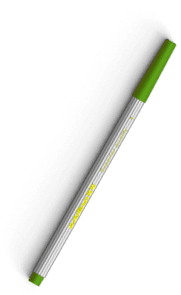Health Assessment Week 3. Reply to peer discussion
Question Description
Respond to your peers by extending, refuting/correcting, or adding additional nuance to their posts.
All replies must be constructive and use literature where possible.
MondayNov 2 at 8:11am
Subjective, objective data and differential diagnosis.
Frantz Jacob
St Thomas University
The vast majority of skin problems that present in the community are minor in nature. Unfortunately, very occasionally, the development of seemingly innocuous symptoms such as a rash and/or itching can be the presenting symptoms of a life threatening condition.
What other subjective data would you obtain?
Subjective data is obtained from the clients when they answer questions that you have asked them (Melnyk & Ellen, 2011). I would obtain documentation data such as name, place of origin. Also, the patients activities before the itchy rash started, data on activities of the patients daily lives, for instance, the places she visits, where she works, what position she does at work and if she has come into contact with someone with the same signs she has. Besides, I would obtain subjective data on the patients health history for example if she has had the condition on another time, if she has had another member of her family with the same condition and her familys history particularly health history. Furthermore, I would obtain nutritional information such as appetite, body weight changes, kind of food she has been eating, and if she takes fruits and vegetables. Another subjective data I would obtain is if the itchy red rash on her arms and legs shifts to other parts of the body. Also, I would ask the patient to describe the pain she feels when she itches on a scale of 1 to 10 with 10 being very severe, if the itchiness is constant or intermittent, if the condition changes with changes in weather, diet or any other condition, and if a substance is produced from itching the rash. If a substance is produced, I would ask the patient to describe the kind of substance, its color and smell.
What other objective findings would you look for?
Objective data is obtained through observing and measuring the patient or physical examination diagnostic and laboratory testing( Melnyk & Ellen, 2011). First, I would check the patients Complete Blood Count (C.B.C) to determine her health condition and observe the presence of disorders such as anaemia. Also, I would conduct a urine analysis to detect organisms, solutes, cells, casts and crystals and defects in the kidneys. In addition, I would measure the patients height and weight and then note down her general appearances, for instance, her alertness, and facial appearance, demeanor, body odor and personal hygiene, and mood. Furthermore, the psychological state would be another objective data I would obtain on top of other data I would also conduct a genitourinary examination to determine the cause of the itchy rash. I would also perform a physical examination of the integumentary system.
What diagnostic exams do you want to order?
With a disease whose signs include a rash, I would order a diagnostic exam that would consist of a history of the patients such as contact with animals, medications, among others. Then, I would conduct a diagnostic examination that would consist of skin biopsy (punch) to obtain a full-thickness skin sample for diagnosis and evaluation of cell pathology. A punch biopsy is used in the differential diagnosis of inflammatory lesions (Rhoads & Jensen, 2014). Also, I would order a skin biopsy (shave) to determine if the lesions are melanomas. Additionally, I would conduct a wood light to assess the extent of rashes and Tzanck testing to determine if it is a viral disease or not.
Name 3 differential diagnoses based on this patient presenting symptoms? Give rationales for each of your differential diagnosis.
I would come up with three differential diagnosis, which are dermatitis, eczema and psoriasis. Dermatitis because of the itchiness and the fact that a person suffering from edema have skin eruptions that look like a rash. Furthermore, it affects moist areas for example creases of the groin, below the breasts and on the neck and the patient has and inflammation and mild edema on her chest wall which fits the areas affected by dermatitis. Secondly, eczema because of the itchiness and also because eczema affects the elbows, the groin area and below the breast which fits the profile of the patient as she has inflammation and swelling on her upper arms, on her thighs and her chest. Eczema leaves vesicles and crusting patches on its victim which the patient appears since she has excoriations on her forearms and legs. Lastly, psoriasis because of the itchiness, and papules on the patient. In addition, the patient has inflammation and edema on her forearms, upper arms, knees, and legs, which fits the profile of psoriasis since it attacks elbows, knees hands and feet.
References
Rhoads, J., & Jensen, M. M. (Eds.). (2014). Differential diagnosis for the advanced practice nurse. (p. 267-268). Springer Publishing Company.
Melnyk, Bernadette Mazurek, and Ellen Fineout-Overholt, eds. Evidence-based practice in nursing & healthcare: A guide to best practice. Lippincott Williams & Wilkins, 2011. (p. 109)
Have a similar assignment? "Place an order for your assignment and have exceptional work written by our team of experts, guaranteeing you A results."








